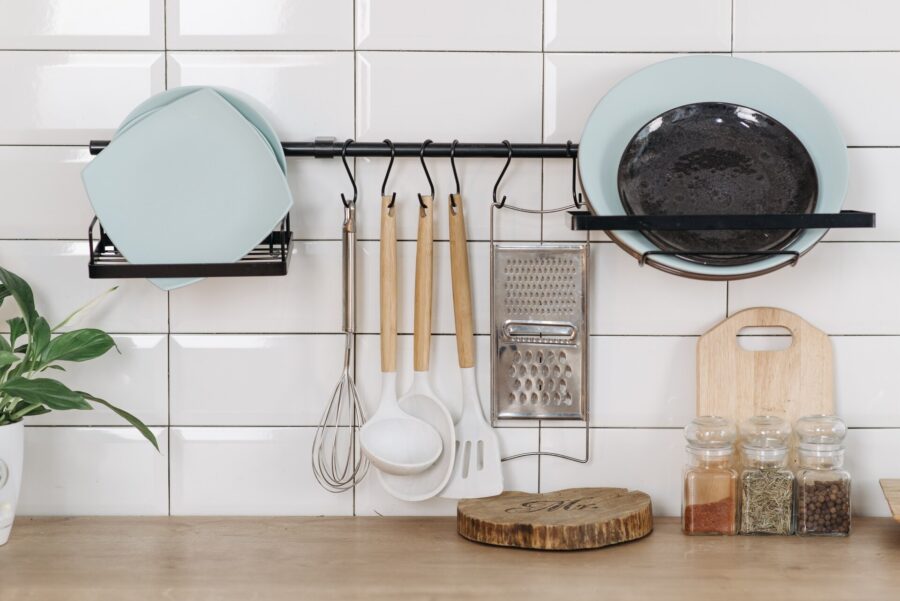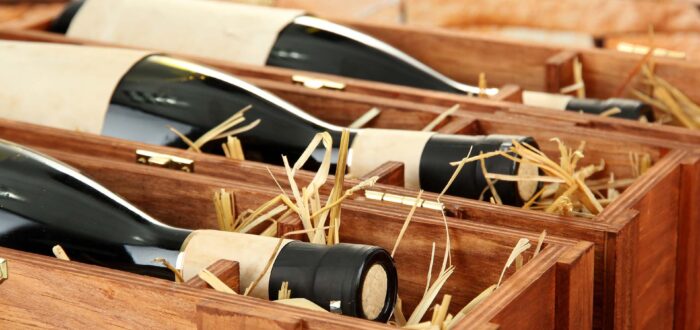

How to Pack Utensils for Moving Across the Country
Posted in How-to on August 7, 2023
Ensuring the safe transport of your belongings when moving across the country is of paramount importance. One category of items that require extra care during the cross-country moving and packing process is utensils. Explore practical tips and instructions on how to pack utensils for moving, ensuring they arrive at your new home intact and ready to be used. Fragile and often essential for everyday use, proper packing techniques can help prevent damage and make unpacking a breeze.
How to pack away kitchen utensils for moving? Start by sorting and decluttering. Wrap fragile items individually in paper or bubble wrap, and place them in sturdy boxes. Securely seal the boxes and label them as “Kitchen Utensils” for easy unpacking.
Moving Cross Country Must Start with Good Plan and Organisation
If you wish to move efficiently and, most importantly, without stress, you need to be prepared to implement some organizing skills. So if you wish to make your relocation easier, you will have to start with relocation preparations on time and plan your move in detail. There will be a lot of things you need to consider before you move and to organize, from booking cross-country moving services to finding a new place to live.
But one task is particularly important and hard for most people, and that is boxing up your entire house. But don’t worry; if you implement excellent packing strategies, even this task will be a breeze.
How to Pack Utensils for Moving? Start by Sorting and Organizing Utensils
Like with other aspects of your move, good planning is key to successfully performing tasks, and this is the case with your packing organization. If you wish to easily pack kitchenware, you will have to first sort and organize them.
Begin by taking inventory of all your kitchenware and categorizing them based on their type or function. This process helps you identify any duplicate or unnecessary items that can be set aside or donated. By organizing your cutlery, you’ll have a clearer idea of the materials you’ll need and how to efficiently pack them for the journey ahead. Here are some categories of kitchenware you can use to organize boxing up:
- Cooking kitchenware – This category includes items such as spatulas, tongs, whisks, ladles, and spoons used for cooking and stirring food.
- Cutting and chopping kitchenware – Knives, kitchen shears, and cutting boards fall into this category, essential for preparing ingredients and chopping fruits, vegetables, and meats.
- Serving kitchenware – Serving spoons, salad tongs, and carving forks are kitchenware used for serving food during meals or special occasions.
- Baking kitchenware – Rolling pins, pastry brushes, measuring cups and spoons, and baking sheets are kitchenware commonly used in baking and pastry preparation.
- Mixing and whisking – This category includes items such as mixing bowls, electric mixers, handheld whisks, and silicone spatulas used for blending and whisking ingredients.
- Kitchenware for eating – Kitchenware such as forks, knives, and spoons, as well as specialized kitchenware like chopsticks, can be categorized as eating cutlery.
- Specialty cutlery – This category encompasses unique kitchenware like garlic presses, can openers, vegetable peelers, zesters, and melon ballers that serve specific purposes in the kitchen.
Declutter and Purge Unnecessary Items
Long-distance moving to a new state provides an excellent opportunity to declutter and purge unnecessary kitchen items. From plates and dishes to old and rusty pots and pans you don’t ever use, now is an excellent time to get rid of all unwanted items – the same is with your cutlery.
Assess each utensil and ask yourself if you have used it in the past year or if it holds sentimental value. If the answer is no, consider donating, selling, or giving away those items. By decluttering and knowing what not to pack, you’ll reduce the number of items to keep, making your move more streamlined and efficient. Remember, a clutter-free kitchen not only eases the moving process but also sets a fresh start for your new home.
Choose the Right Packing Materials For Your Needs
When it comes to packing your kitchen utensils for a move, choosing the right materials is crucial to ensure their safe transportation. Opting for suitable packing materials not only protects your kitchenware from damage but also makes unpacking easier at your new destination.
It’s essential to consider factors such as fragility, shape, and size of the cutlery. From sturdy cardboard boxes and bubble wrap to paper and tape, selecting the appropriate materials tailored to your specific needs will provide the necessary cushioning and security for your cutlery during the cross-country journey. Here is a list of essential materials to consider:
- Sturdy cardboard boxes – Choose high-quality, sturdy cardboard boxes in various sizes to accommodate different types of cutlery. Opt for boxes specifically designed for fragile items if available.
- Bubble wrap – Wrap fragile kitchenware individually in bubble wrap to provide cushioning and protect them from impacts during transit. Secure the bubble wrap with tape to keep it in place.
- Packing paper – Use paper to wrap non-fragile kitchenware or as additional padding between kitchenware in the boxes. It helps prevent scratches and keeps items from shifting.
- Dividers or partition kits – Consider using dividers or partition kits specifically designed for cutlery. These handy inserts help separate and protect each utensil, preventing them from knocking against each other.
- Duct tape – Use strong duct tape to seal the boxes securely and prevent them from opening during transportation. Reinforce the bottom and top seams of the boxes for added strength.
- Ziplock bags – Small kitchenware, like measuring spoons or specialty tools, should be placed in ziplock bags and sealed tightly. This keeps them organized and prevents them from getting lost.
- Dish towels or linens – Utilize clean dish towels or linens as extra padding between kitchenware or to wrap large items. They offer an additional layer of protection and help absorb any potential shocks.
- Marker or labels – Clearly label each box as “Kitchen cutlery” or specify the utensil category to make unpacking easier at your new home. You can also use color-coded labels for different types of cutlery.
- Styrofoam peanuts – If you have delicate or fragile cutlery, you may consider using styrofoam peanuts or peanuts as additional cushioning within the boxes.
How to Pack Utensils for Moving – Employ Different Boxing Up Techniques
It is time to learn how to pack kitchen utensils for moving. To successfully do this, you will have to employ various boxing-up techniques that can help ensure their safe transport. Wrapping individual items is an important step in the process. Start by wrapping each utensil individually using paper or bubble wrap and securing it with tape. Labeling the boxes as “Kitchen Utensils” and securely sealing them with duct tape will aid in identification and prevent accidental openings during the move.

Wrapping Individual Utensils a Step-By-Step Guide
Start by wrapping each utensil individually. Use paper or bubble wrap to create a protective layer around fragile items. Secure the wrapping with tape to keep it in place. For kitchenware with sharp edges or delicate handles, consider additional padding or cushioning. To wrap and secure kitchenware individually, follow these step-by-step instructions:
- Lay out a sheet of paper or bubble wrap on a flat surface,
- Place a single utensil at the corner of the paper or wrap, ensuring it is centered,
- Fold the sides of the paper or wrap over the utensil, creating a snug enclosure,
- Roll the utensil tightly within the paper or wrap, making sure all parts are covered,
- Secure the wrapping with tape, ensuring it stays in place,
- Repeat the process for each utensil, providing adequate wrapping and securing for fragile or sharp items.
Layering and Organizing Utensils in Boxes
To maximize space and minimize movement, consider efficient layering and organizing methods. Begin by placing a layer of paper or dish towels at the bottom of the box to provide a protective cushion. Arrange kitchenware in a flat or upright position, depending on their shape and size. Stack similar kitchenware together, keeping sets intact and preventing them from getting separated. Fill any gaps or spaces between kitchenware with additional paper or dish towels to minimize movement.
Avoid overpacking the boxes, as it can lead to excessive pressure and potential damage to the cutlery. Place a final layer of paper or dish towels on top of the box before sealing it. By employing these techniques, you can optimize space utilization and keep your kitchenware secure during the move.

Labeling and Securing the Boxes
Labeling boxes where your kitchenware is is crucial for easy identification and organization. Proper labeling allows for quick and efficient unpacking at your new home. Clearly label the boxes as “Kitchen Utensils” or specify the utensil category. You can also use color-coded labels for different types of cutlery.
Additionally, emphasize the fragility of the contents by including phrases like “Fragile” or “Handle with care” on the boxes. Clear labeling will help movers and yourself handle the boxes with the necessary caution, reducing the risk of damage to your kitchenware during the cross-country move.
Hire Cross Country Movers to Box Everything Up for you
There is no doubt that hiring professional cross-country movers to handle the packing process can provide numerous benefits. These experts are experienced in efficiently and securely packing belongings, including cutlery, for long-distance transport. By entrusting the packing to them, you can save valuable time and energy.
The crew at Cross Country Movers has the necessary knowledge and skills to use appropriate materials, employ efficient techniques, and ensure the safe transport of cutlery. Movers will even bring their own supplies, saving you the hassle of sourcing and purchasing them. By hiring cross-country movers to box everything up for you, you can have peace of mind knowing that kitchenware and other belongings will be handled with care and expertise throughout the boxing-up process.
Long Distance Movers Can Do More than Pack Your Stuff
Hiring long-distance movers for your cross-country move offers a range of valuable services beyond packing your belongings. Our professionals can handle tasks such as loading, transportation, car shipping, and storage services. By entrusting us with your move, you benefit from our expertise in handling fragile items like cutlery, ensuring their safe transport. We have the necessary equipment and manpower to lift heavy and bulky items, reducing the risk of injuries or property damage.
Contact Cross Country Movers today so you can focus on other important aspects of your move while leaving the logistics and heavy lifting to the professionals. Overall, the convenience, efficiency, and peace of mind offered by long-distance movers make them a valuable asset during your cross-country move.

Follow Our Guide and You’ll Relocate without a Fuss
By following the comprehensive guide we have provided, you can ensure a smooth and stress-free relocation experience. From boxing up your utensils with care to hiring Cross Country Movers for assistance, you have the tools and knowledge to tackle the challenges of relocating with confidence. Remember to declutter and organize your belongings, choose the right materials, label your boxes appropriately, and contact the best movers in the industry. With these steps, you’ll be well-prepared to embark on your cross-country move without a fuss.
FAQ
Can I Pack Utensils with Other Kitchen Items?
Yes, you can pack these tools with other kitchen items. However, it’s important to ensure they are properly wrapped and protected to prevent damage. Consider using dividers or separate compartments within the box to keep kitchenware organized and prevent them from scratching or banging against each other.
Should I Disassemble Any Utensils Before Packing Them?
It depends on the type of cutlery. For utensils with detachable parts or handles, disassembling them can help save space and prevent breakage during the move. Keep small parts together in sealed bags and clearly label them to avoid misplacement.
How Should I Pack Fragile or Delicate Utensils?
To pack fragile or delicate cutlery, individually wrap them in packing paper or bubble wrap. Pay extra attention to fragile areas, such as delicate handles or thin blades. Use additional padding, such as dish towels or packing peanuts, to provide cushioning and prevent movement within the box.
Are There Any Special Considerations for Packing Sharp Utensils?
When packing sharp cutlery, such as knives or kitchen shears, take extra precautions to ensure safety. Use blade guards or secure the sharp ends with cardboard or foam to prevent accidental injuries. Wrap them tightly with packing paper or bubble wrap and ensure they are well-secured within the box to avoid shifting during transportation.







